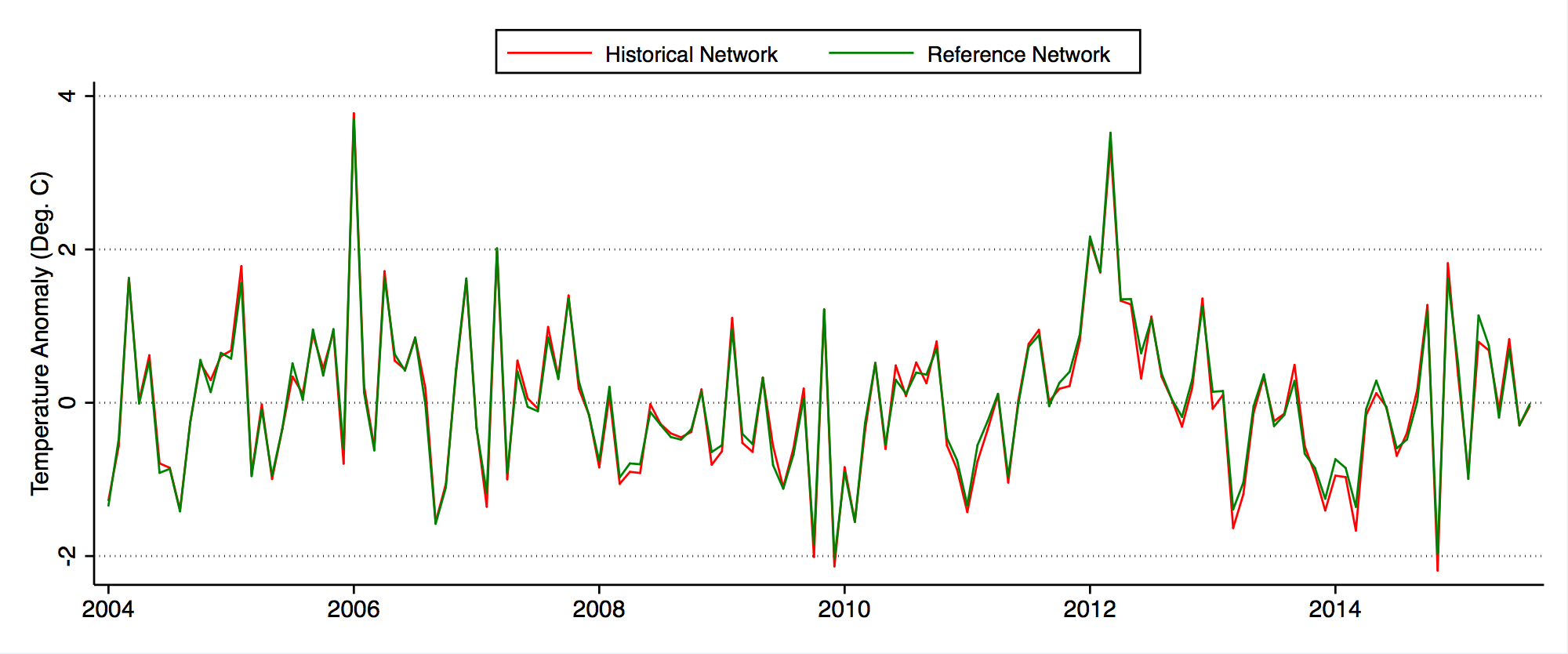Evaluating the impact of Historical Climate Network homogenization using the Climate Reference Network
Zeke Hausfather, Kevin Cowtan, Matthew J. Menne, and Claude N. Williams, Jr
Background
A new study confirms the accuracy of adjustments to the U.S. temperature record. The study by researchers at University of California Berkeley, the University of York, and NOAA assesses the adjustments to correct for station moves, instrument changes, and other problems at U.S. historic temperature measurement stations. Raw and adjusted data from the stations were compared to data from the new pristinely-located U.S. Climate Reference Network. The adjustments make records for normal stations much more similar to those of nearby Climate Reference Network stations. This provides an important empirical test of the impact of temperature adjustments, and increases our confidence that adjustments are effective at dealing with localized biases while improving our estimate of longer-term U.S. temperature changes. The study is published in the journal Geophysical Research Letters.
Measuring global temperatures in the U.S. no easy task. While we have mostly volunteer-run weather station data from across the country going back to the late 1800s, these weather stations were never set up to consistently monitor long-term changes to the climate. Stations have moved to different locations over the past 150 years, most more than once. They have changed instruments from mercury thermometers to electronic sensors, and have changed the time they take temperature measurements from afternoon to morning. Cities have grown up around stations, and some weather stations are not ideally located.
All of these issues introduce inconsistencies into the temperature record. To detect and deal with these issues, NOAA uses a process called homogenization which compares each station to its neighbors, flags stations that show localized changes in longer-term temperatures not found in nearby stations, and removes these local breakpoints. While the impact of these adjustments on temperature records is relatively small globally, in the U.S. it has a much larger effect due to the frequent changes that have occurred at our volunteer-run historical climatological network. Fixes to inconsistencies in temperature data have effectively doubled the rate of U.S. warming over the past century compared to the raw temperature records.

A picture of the three redundant temperature sensors at a U.S. Climate Reference Network station.
To help resolve uncertainties caused by reliance on the historical network, NOAA began setting up a U.S. Climate Reference Network starting in 2001. The Climate Reference Network includes 114 stations spaced throughout the U.S. that are well sited and away from cities. They have three temperature sensors that measure every two seconds and automatically send in data via satellite uplink. The reference network is intended to give us a good sense of changes in temperatures going forward, largely free from the issues that plagued the historical network.
While the Climate Reference Network will provide excellent data on the changing U.S. climate in the future, in the past we are stuck with the historical network. What we can do, however, is use the reference to test how well our adjustments to the historical network are doing. Specifically, since we know that the reference network is largely free of issues, we can see if adjustments to the historical network is making their records more similar to nearby reference network stations. That is the focus of our study recently published in Geophysical Research Letters.

Comparison of monthly average adjusted USHCN (historical network) and USCRN (refernece network) temperatures between January 2004 and October 2015.
We compared both raw and adjusted temperatures measured by the historical network to temperatures measured at nearby reference network stations. In the vast majority of cases adjustments served to make the weather station measurements much more similar to those taken by the reference network. Since we know that the reference network is largely free of measurement problems, this increases our confidence that adjustments are effective at finding and removing problems in the historical network.

Comparison of the distribution of temperature trend differences between proximate raw historical, adjusted historical, and reference network station pairs. If the historical network had identical trends to the reference network, it would match the green shaded area perfectly.
The Climate Reference Network was only established in 2004, so we can only directly test the adjustments for the recent period. However, the algorithm used to detect and adjust for problems in the historical network is applied equally over the past decade and the past century, so the fact that it seems to work quite well during the past 10 years increases our confidence that it also effectively deals with problems in the past.